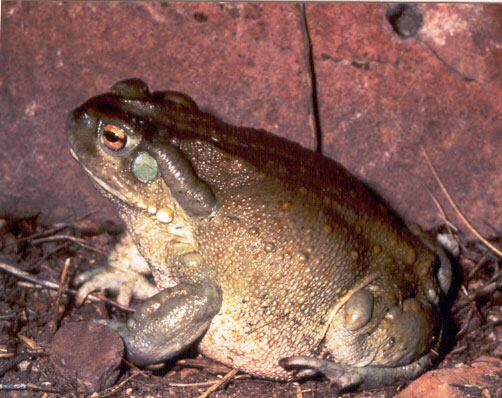Facts About Colorado River toad
The Colorado River toad, also known as the Sonoran Desert toad, is a fascinating amphibian that inhabits northern Mexico and the southwestern United States. Notable for its toxic secretions, which contain 5-MeO-DMT and bufotenin, this toad is the largest native species in the U.S., only surpassed by the non-native cane toad in size. It can be identified by its smooth skin, olive green or mottled brown coloration, and the presence of toxic glands on various parts of its body.
Typically residing in desert and semi-arid regions, the Colorado River toad favors areas near water sources. It is semiaquatic and often interacts with other toad species. As an active forager, it consumes a diverse range of prey. The breeding season begins with the rains from May to August, during which females lay thousands of eggs.
The toad's secretions are particularly notable for their hallucinogenic properties, containing compounds such as 5-MeO-DMT and bufotenin. These chemicals can induce psychoactive effects when vaporized or ingested. Interestingly, traditional medicines such as ch'an su have utilized bufotenin from these secretions.
However, the toad's psychoactive properties have also made it a target for recreational drug use, leading to incidents of poisoning and even fatalities from ingestion. Due to these dangers and the toad's protected status, some U.S. states have enacted laws prohibiting the possession and use of Colorado River toads.
The toad's unique attributes have sparked legal and ethical debates regarding its conservation and the risks associated with its misuse. It remains a subject of intrigue for scientists, conservationists, and the general public alike.

 Guatemala
Guatemala